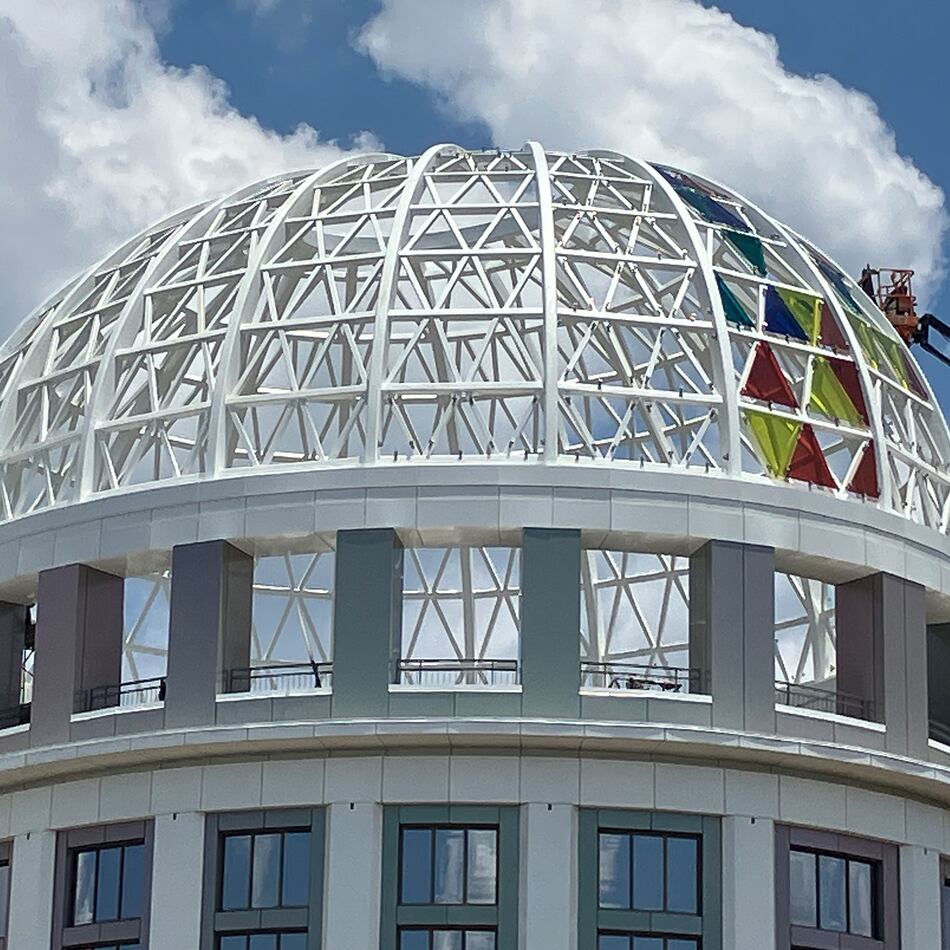Chatham is once again the top county for bald eagles in Georgia with 26 nests counted here this year.
And the birds are getting more citified. The latest nest count featured increased signs of eagles nesting in the midst of extensive development, said Georgia Department of Natural Resources Eagle Survey Leader Bob Sargent.
Think the lagoons at The Landings. These more urban eagles were especially the case on the north edge of metro Atlanta and the margins around Savannah.
Chatham's first-place finish comes with an asterisk for 2021 because the usual extent of the count was curtailed by the pandemic, Sargent said. But with plenty of tall pine trees, open water, and fish, the county offers ideal conditions for eagles.
The survey of six coastal counties by helicopter in the winter and spring recorded the locations of 71 nests, the DNR reported. Another 12 nests in southwest Georgia were monitored on foot, but COVID factors nixed the flights there. (The coast – the state’s eagle-nesting hotspot – is flown each year, while surveys of the Coastal Plain and Piedmont and the mountains alternate years.)
The coastal counties tallied nesting totals almost identical to 2020 and in line with annual averages. All told, the 83 territories monitored this year fledged 94 young, or 1.5 young per nest, which is right at the long-term average in Georgia. Sargent said six new occupied nest territories were found on the coast, plus three elsewhere in the state.
The urbanization of bald eagles is a relatively new phenomenon in Georgia. Peach State eagle pairs previously have tended to avoid nesting near man-made structures and infrastructure.
But with eagle numbers soaring it may be that they can't be as picky about their new homes. Florida, with 1,500 nesting territories, has already documented eagle nests near urban areas and on electrical towers and other man-made structures.
The U.S. Fish and Wildlife Service estimates there are 316,000 bald eagles in the lower 48 states, a fourfold increase since 2009. Georgia nest totals grew from about 100 in 2007 to 200-plus in 2015.
“Perhaps more eagles, especially those classified as floaters because they sort of hang out waiting for territories to become available, are discarding the rule and building homes closer to us,” Sargent said.
Nest Numbers
An occupied territory is one where there was evidence that eagles had engaged in nesting activity (e.g., had added greenery or branches to an existing nest, were observed in the nest, or had laid eggs or were tending young). Successful nests were those that fledged at least one eaglet.
In the six coastal counties: 71 occupied nest territories, with 55 fledging at least one eaglet (78% success rate, which is average), 81 young fledged (1.5 per successful nest – average) and 1.1 young fledged per occupied nest territory (average). Six new occupied nest territories found.
Bryan: 2 occupied nest territories, 2successful nests
Camden: 13 occupied nest territories and 10 successful nests
Chatham: 26 occupied nest territories and 19 successful nests
Glynn: 10 occupied nest territories and 9 successful nests
Liberty: 8 occupied nest territories and 5 successful nests
McIntosh: 12 occupied nest territories and 10 successful nests
Totals in Coastal and Southwest Georgia: 83 occupied nest territories, with 64 fledging at least one eaglet (77% success rate), 94 young fledged (1.1 per occupied territory) and 1.5 young fledged per successful nest. Again, these statistics are average.
Mary Landers is the environment and health reporter at the Savannah Morning News. Contact her at 912-655-8295. Twitter: @MaryLandersSMN
This article originally appeared on Savannah Morning News: Bald eagles get more urban as numbers rise in Chatham
The Latest
Featured



